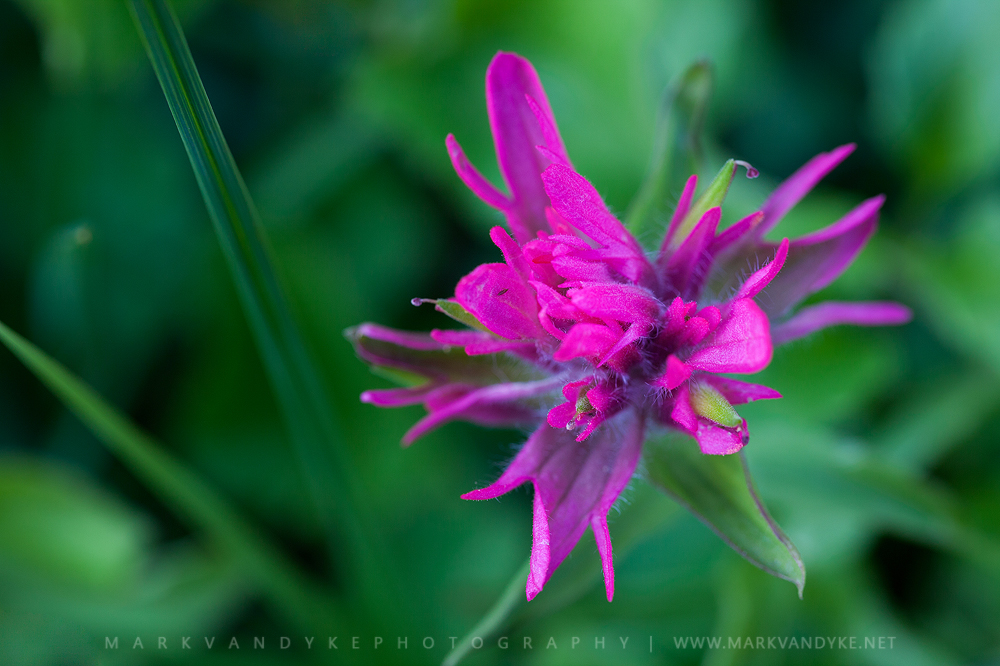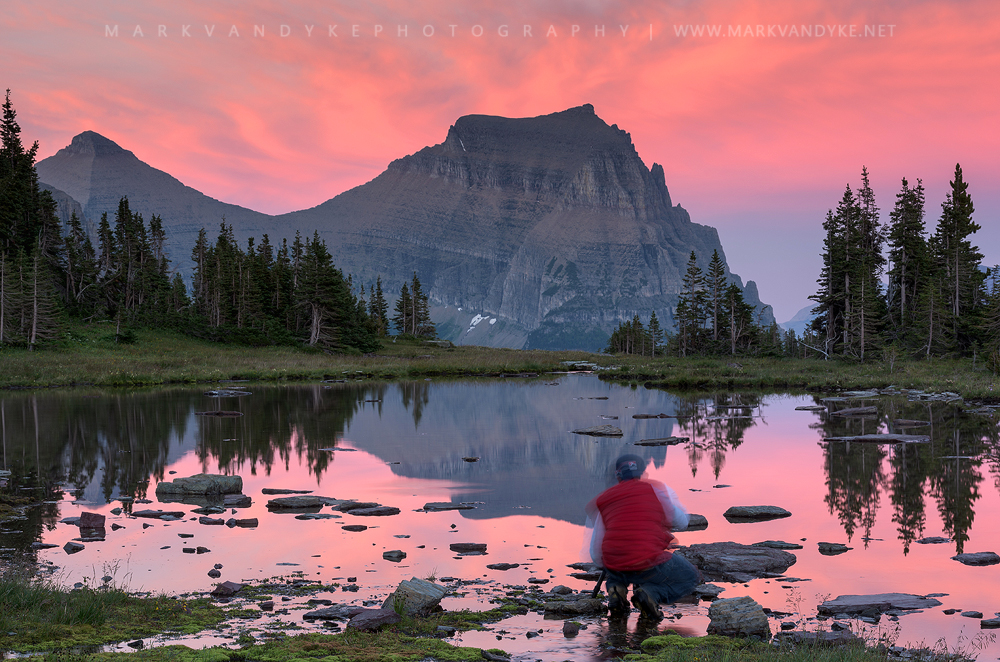Day three began with a twist. Lots of them actually. As we pulled out of Yellowstone National Park following sunset the road became narrow and mountainous, ascending and descending what must have been some pretty dramatic terrain (we couldn’t see much on account of darkness). Sleep didn’t come easy, especially for the backseat riders who were receiving the lion’s share of road feedback as the truck trailed hairpin corners up and down the mountain. A little game of Q&A arose as a means to keep minds busy with something other than the never-ending switchbacks of the outside world. The road eventually straightened a bit and the overnight drive settled into some two-lane Montana highway, the only obstacle an occasional semi which needed passing.
By morning’s first light we were at Glacier National Park; we made it! I have to admit, I was pretty spent from the cumulative drive. Most of the day I was largely off my game with the camera: I’ll blame it on a combination of exhaustion and adjustment to a new landscape (probably neither to be honest :-)). Our rental home wouldn’t be ready for check-in until mid-afternoon, so our first adventure was down a relaxing stretch of Grinnell Glacier Trail, starting at the Many Glacier Hotel and progressing alongside the level shores of Swiftcurrent Lake. It was here that I was introduced to the Thimbleberry, a raspberry-like trail snack that was growing in profusion trailside. Anyone that knows me will know the happiness that berry season brings me!
A short one-mile in and we all arrived to the shores of Lake Josephine, a backcountry lake surrounded by towering mountains. With the exception of a couple snaps of the others, I didn’t photograph the scene further which led to some curiosity from the group as to my own go / no-go decision-making process behind the lens—a tough question to answer logically. For me, I have to have two elements in large part to grab the camera. The first is an instinctual/guttural pull to the scene in front of me. I have to feel a real, physical need to communicate something to others through the lens. I’ve come to understand my own pull to certain scenics; rivers and streams chief among them. Others are still largely a mystery to me. I know it when I see it though :-). The second element that draws me to the camera without fail is a favorable quality of light; it doesn’t have to be exceptional, magic or unique, just something flattering for the scene in question. I imagine my choice not to photograph at times comes off to others as a form of photo-snobbery. However, after years of digital files hogging up external drives and Lightroom catalogs—as well as the occupation of untold hours of review and editing time—I’ve become a bit more selective about what triggers the shutter when it comes to landscapes. On the other hand, trips like this one certainly loosen my requirements as I don’t know if or when I’ll return again. Suffice it to say, my shooting style and personal preferences behind the camera combined with the harsh afternoon sun, cloudless skies, and frequent traffic along the shores of Lake Josephine on this particular afternoon made it very easy for me to simply plant my butt on the ground and enjoy the amazing scenery of Glacier National Park!
Following our first hike within the park, we made it over to our rental home for the week. Our landlords were super nice, allowing us to settle onto the back porch while they finished cleaning up the property for our stay. In the meantime, a group of us ran a mean game of Uno, which I quickly learned was not my strong suit! I caught a number of solid whuppings throughout the week when it came to various card games with the other meet-up photographers: note to self, don’t hit the casino any time soon! The property was gorgeous in a very western way: open, treeless, underneath big skies, fronting a river, with distant views of mountains in both directions. Our only neighbors were a curious midnight black horse and a few local pups that patrolled the property occasionally. We relaxed for a few hours as several additional group participants who chose to fly into Great Falls, Montana (foregoing the cross-country drive) made their way to the house.
Our first hike as a complete group was an evening excursion up the Hidden Lake Nature Trail accessed via the Logan Pass Visitor Center. A series of elevated boardwalks passing through fields of wildflowers and by numerous waterfalls and streams brought us to an open alpine meadow overlooking Hidden Lake, another glacially-colored blue/green backcountry lake. A number of critters joined us as well, including a wildflower-munching ground squirrel and several acrobatic mountain goats. It was easy to understand why the literature on this place always quotes Glacier National Park as being “a pristine environment”—the views and wildlife alone were beyond my expectations. I was quite overwhelmed with the scene to be honest. My instinct was to get closer! I wanted to run down to the lake and stand upon its shores but time was limited before sunset and I didn’t want to split from the group on our first hike. I wanted to walk over to the rocky edges but trail closures forbade off-trail adventure. I pretty much whiffed on photography this evening! Regardless, it was a truly beautiful location that I hope to return to in the future.
The highlight of the hike was actually on the return trip. Light from sunset caught clouds in the eastern sky and reflected vibrantly into some of the ponds along the descending trail. For a couple of minutes the world turned soft shades of magenta and lavender, reflecting color into calm waters, and set-off against vibrant green mosses. Again, I largely whiffed behind the camera. It was not meant to be an overly productive day behind the lens for me. Getting right with these temporary blips has been an ongoing lesson with my own full-time photography; I no longer see them as negative, however. Creativity needs space and creativity needs downtime. When and where that downtime and space occurs is largely outside of my control. What I can do is respect the process and know that it’s necessary for future production.






